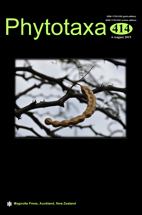Abstract
Prosopis andicola is presented as a new combination and rank deduced from P. laevigata var. andicola. Prosopis andicola differs from P. laevigata var. laevigata by having longer spines, leaves with one pair of pinnae, fusiform-acute leaflets, and solitary, falcate and frequently twisted legumes at maturity, with bigger seeds. Additionally, a new species P. calderensis is described. Prosopis calderensis, differs from these two species by its branches often with sugary excretions, glaucous leaves, a longer distance between leaflets on the rachis, anthers frequently purple, falcate and often twisted legumes at maturity in groups up to seven. Prosopis laevigata are trees distributed especially in the central plateau and hillsides of Mexico, while P. andicola are shrubs from Southern Peru and Bolivia, and P. calderensis are shrubs or cultivated trees from the occidental deserts of western Peru.

